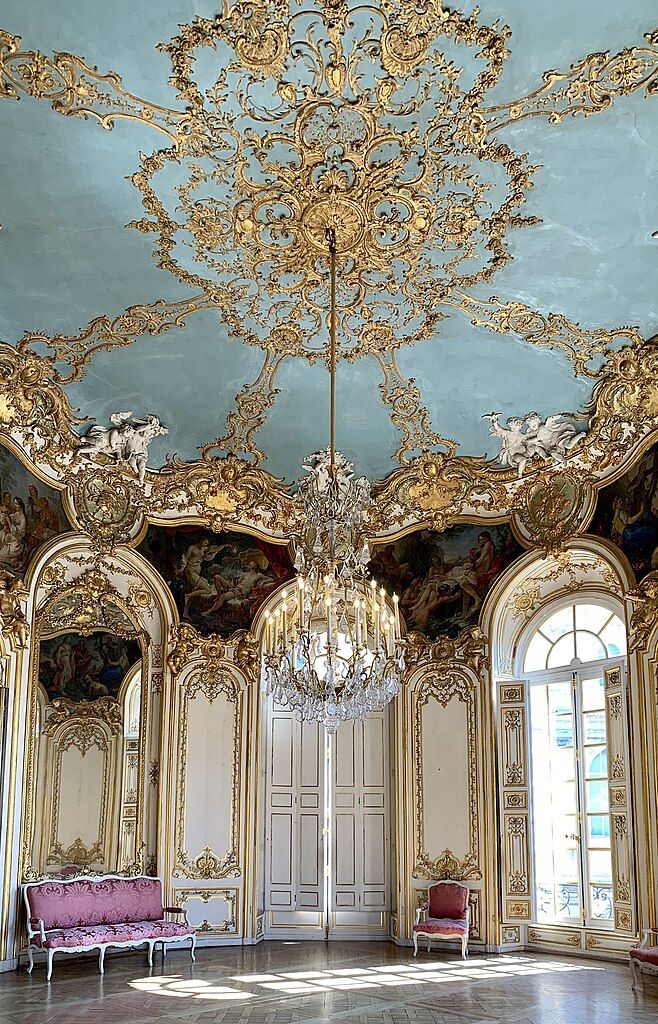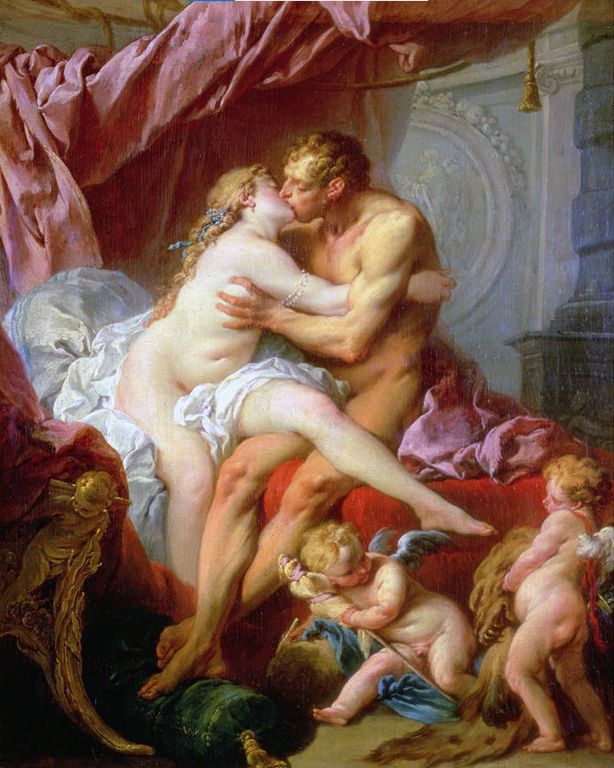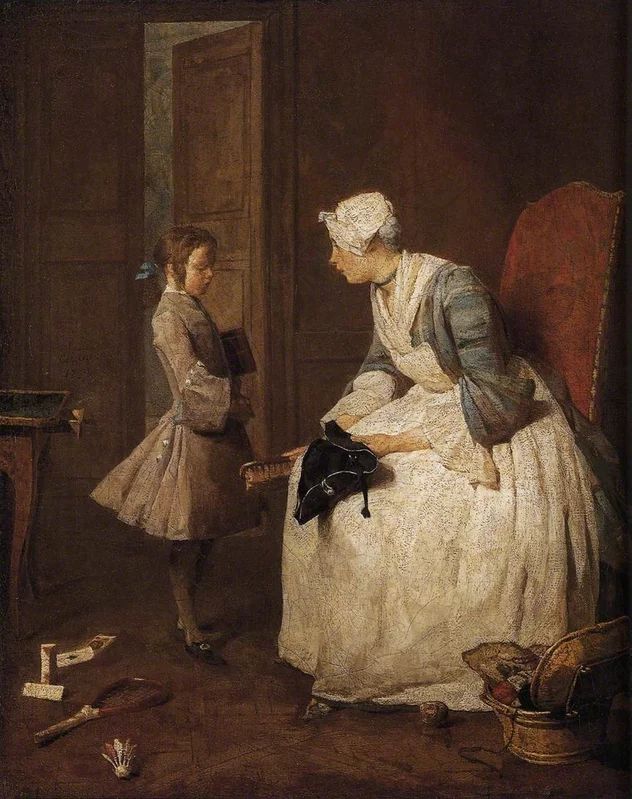In the history of French art, the salons in the Hôtel de Soubise undoubtedly stand as one of the best examples of the "pictorial decoration" (genre pittoresque) style. This style emphasizes subordinating architectural forms to pictorial design patterns, creating a unique visual effect. The decorative motifs include shells, flowers, irregular curls, budding leaves, and swirl patterns. The design goal was to create light, elegant, luxurious, and fresh decorations, with designers like Nicolas Pineau (1684-1754) and Juste-Aurèle Meissonier (1693-1750).

This style of decorative art is not limited to visual pleasure but also incorporates more curvilinear forms, giving it an organic character that can be described as sensual and even voluptuous. This quality is particularly evident in François Boucher's (1703-1770) painting Hercules and Omphale. In this painting, the chair legs sculpted with gilded Cupid decorations perfectly complement the seductive and indulgent scene.
Boucher's paintings usually leave more room for imagination, but Hercules and Omphale is an exception in its directness. This painting not only showcases Boucher's characteristic sensuality, even in religious works, but also reflects his unique perspective on decorative art. Boucher's contemporary, Jean-Siméon Chardin (1699-1779), had a vastly different approach in his paintings.

Chardin's works focus on the lives of the lower and middle classes, dominated by the grays and browns of plain linens and coarse fabrics. Chardin used large patches of color, building his scenes slowly and skillfully to depict simple and healthy life. In contrast to Boucher's fantastical and sensual style, Chardin's paintings are more down-to-earth and realistic. His painting The Governess was purchased by a wealthy Prussian banker and later sold to the Prince of Liechtenstein.
Chardin's paintings often carry moral undertones, as seen in The Governess. In this painting, the governess scolds the young child in her charge for being too lazy, indicated by the scattered shuttlecocks, badminton rackets, and playing cards. Although Chardin is called the painter of the middle class, his moral themes were praised by both the upper and middle classes.

Denis Diderot highly praised Chardin, noting that his works harmoniously combined color and reflection, capturing the essence of objects' reality. Chardin's meticulous depictions conveyed the texture and weight of objects, making viewers feel as if they could touch the material reality of the items in the paintings.
In summary, the "pictorial decoration" style uses curves and decorative elements to create a luxurious and sensory visual experience. Through their distinct artistic pursuits, Boucher and Chardin added rich colors and depth to 18th-century French art. This style reflects not only the artists' creative intentions but also the social and cultural backdrop of the era and the aesthetic tastes of the people.